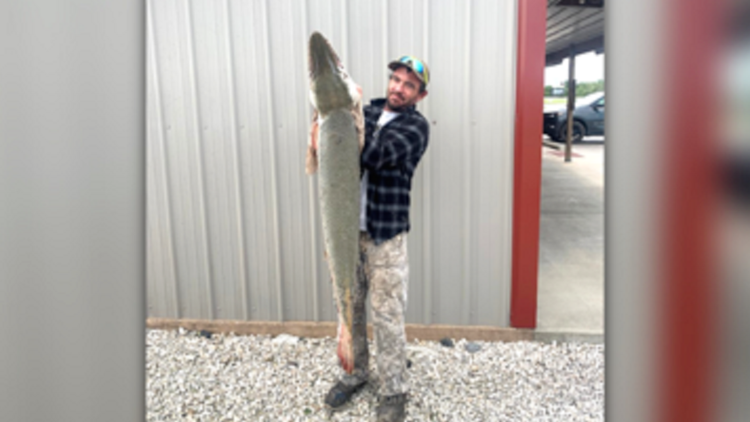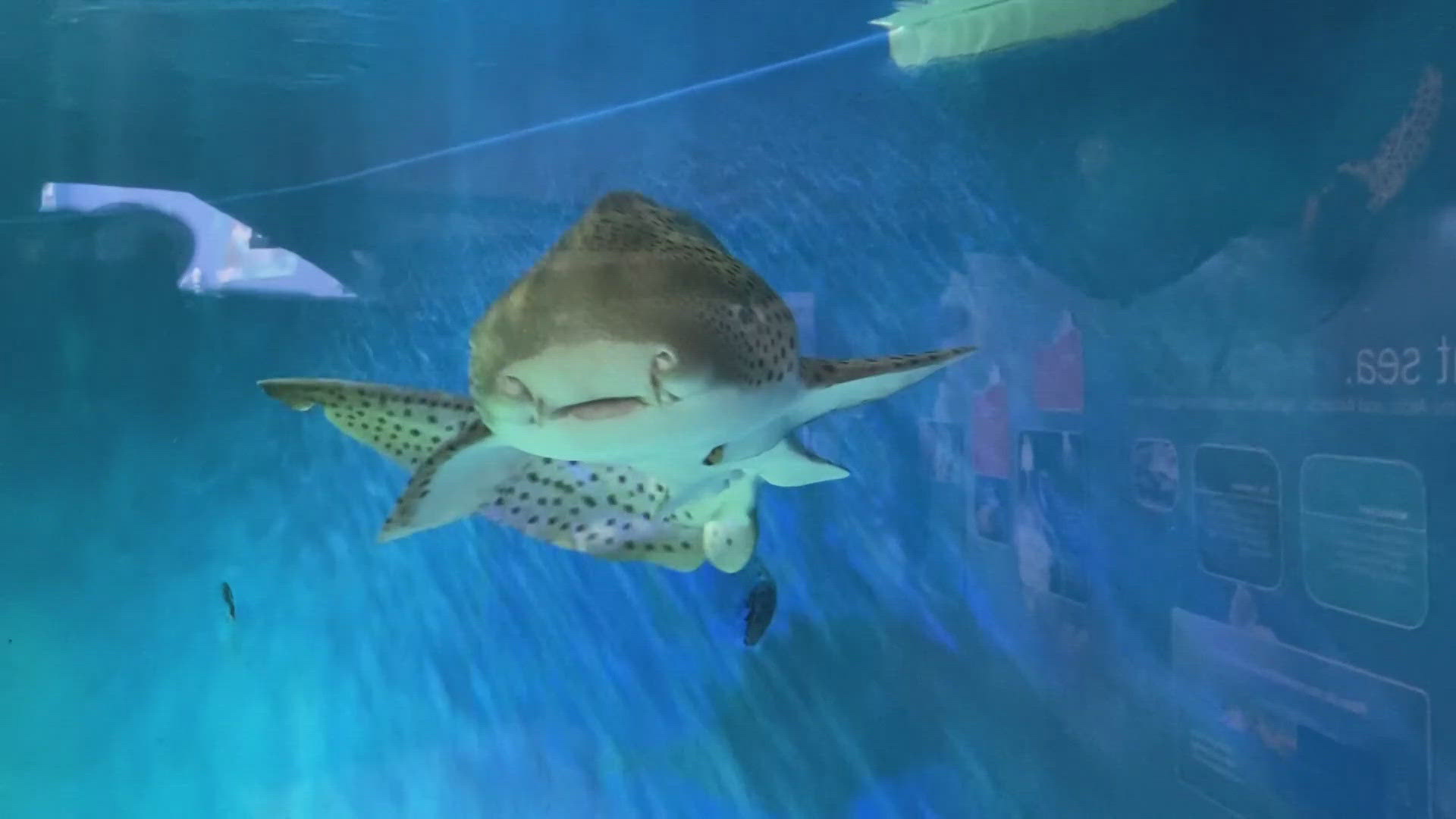OSWEGO, Kan. — A Kansas man who was fishing in the Neosho River caught something that has never been seen before in the area — a 4-and-a-half-foot alligator gar.
The Kansas Department of Wildlife and Parks (KDWP) says on its website these types of gars are not native to Kansas and have never been documented there before.
Fisherman Danny Smith II told USA Today he knew he had caught something unusual. His fishing buddy helped identify the fish and reportedly said, "They ain't supposed to be here [in Kansas]."
Smith told the outlet he thought he caught a "pretty decent flathead" but after fighting to reel it in, the shape of its head "threw [him] off."
After successfully getting the boat on the boat, Smith explained his boat was "tore up."
"The fish was flopping and flipping and destroyed one of my oars. There was one little flathead about 10 or 15 pounds in the boat and it was wanting out of the boat just as bad as I was because [the bigger fish] was tearing up things bad," he told the USA Today. "[It] has got sharp teeth and double rows of teeth in his mouth."
These types of fish reportedly date back nearly 100 million years. They are not always common but can be found from southwestern Ohio, southeastern Missouri and Illinois, south to the Gulf of Mexico and a little part of northeastern Mexico.
So how did it get there?
To be able to find out where the fish came from, KDWP biologists reportedly have "several unique" options.
All states involved in the reintroduction efforts of the alligator gar tag each hatchery-produced fish, KDWP explains. The staff was able to check and rule out the possibility of the fish coming from the efforts.
“Because most populations of this species can be distinguished from one another with a sample of the fish’s fins, another option we’re considering is genetic identification,” KDWP Assistant Director of Fisheries Research Jeff Koch wrote on the website. “This will tell us if the fish came from an existing population in another state.”
If this other option doesn't work out, microchemistry is another technique that can be used, KDWP explains.
The website says microchemistry is "performed by measuring the elemental proportion of a bone on a given fish and comparing it to the elemental concentration of a surrounding water," which could help determine how long the fish had been in the Neosho River.
“It’s not unlikely that this fish was once somebody’s pet or purchased from a pet store, and simply released into the river once it became too large,” KDWP Fisheries Division Director Doug Nygren said. “These techniques should allow us to determine which mode of introduction occurred.”
The KDWP says the alligator gar can be easily identified by "their broad snouts that loosely resemble that of the American alligator."
According to National Geographic, the fish also has razor-sharp teeth. It can grow up to 10-feet long and weigh nearly 350 pounds, which makes it the largest fish species in North America that spends most of its time in freshwater.
The alligator gar poses no threat to humans, and there are no known attacks on people, National Geographic says.
While trying to find out how Smith was able to catch this alligator gar in the Neosho River, KDWP wants to remind people "transporting and releasing fish or other species in public waters, whether native or non-native, is illegal in Kansas."
“Transporting and releasing fish risks spreading other harmful species such as microscopic zebra mussels, fish diseases, or aquatic vegetation that might be present in the water used to transport the fish,” KDWP Aquatic Nuisance Species Coordinator Chris Steffen wrote.
According to the Florida Museum, the alligator gar can be found in the Florida Panhandle in large, slow-moving rivers, reservoirs, oxbow lakes, bayous and bays, in fresh and brackish water.
Springtime in Florida is the "prime" for the alligator gar, especially at the Escambia Bay, Bass Fishing explains.
No one in Florida waters can take or harvest alligator gars without a special research permit, per the FWC Fish and Wildlife Research, FishAnywhere.com explains.



